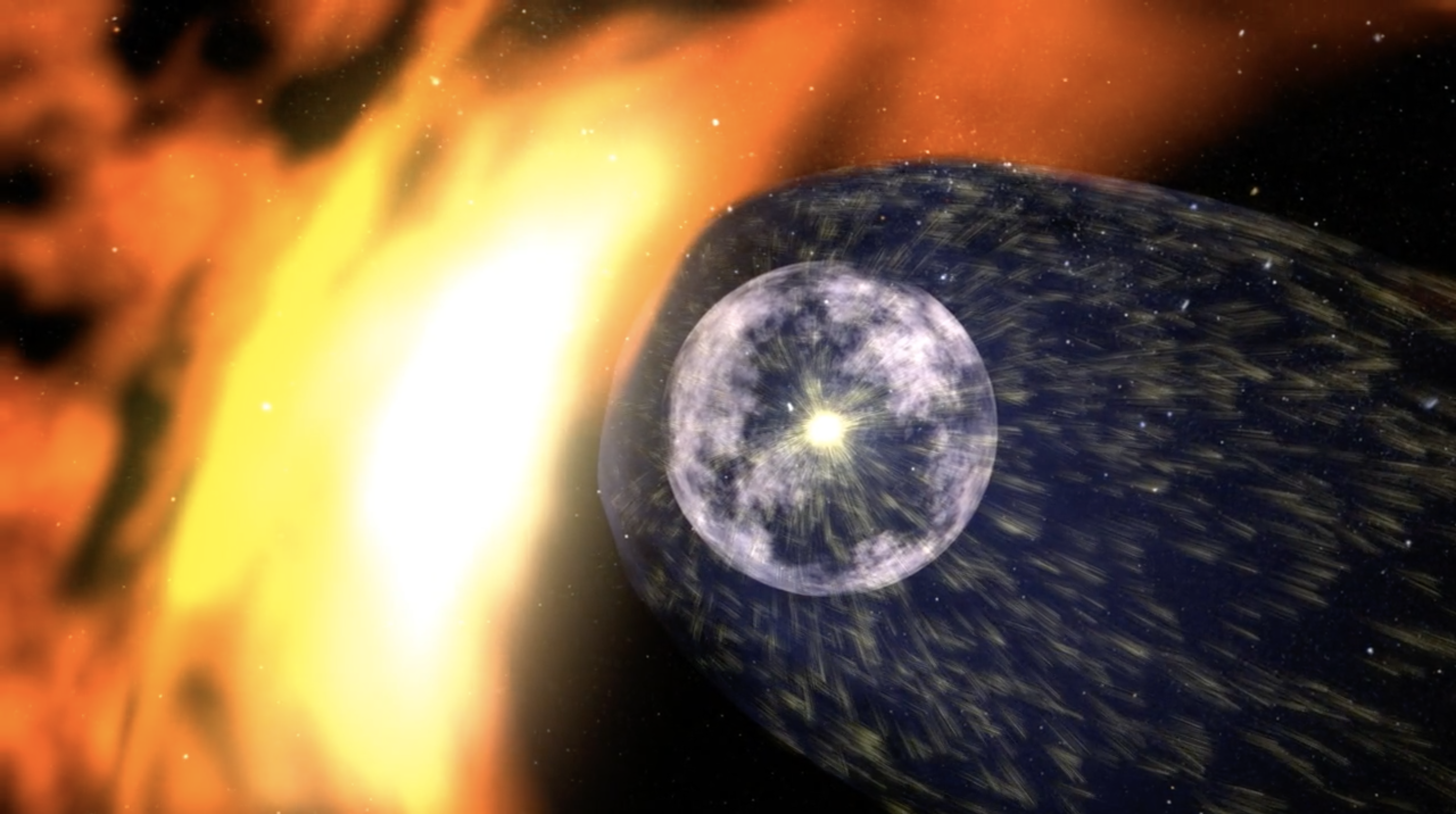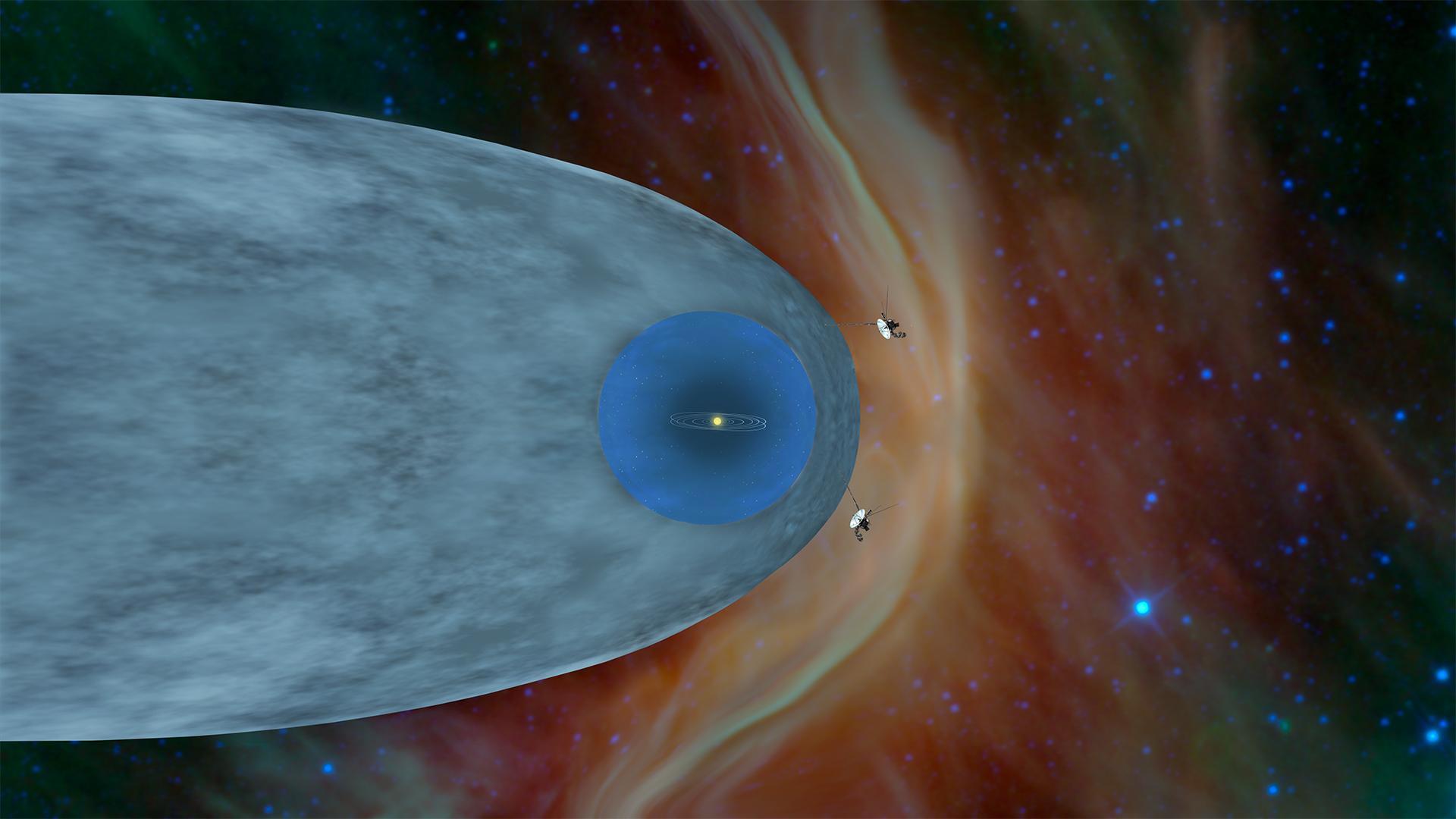There's a Violent Battle Between Solar Wind and Cosmic Rays, and Voyager 2 Just Passed Through it
At the edge of our solar system, a fierce battle rages between solar wind and interstellar rays. NASA's Voyager 2 spacecraft has now passed through the frontlines.

Solar wind is not exactly our friend.
The flood of hot, electric particles constantly gushing out of the sun bathes the entire solar system in radiation, frying the occasional satellite and making life impossible on any planet not shielded by an atmosphere. In both a literal and figurative sense, the solar wind blows — but, as new observations from the edge of our solar system suggest, it also protects everything it touches from the even more damaging forces of interstellar space.
As the solar wind flows outward for billions of miles in every direction, it creates a bubble of energy that surrounds our entire solar system. At the edge of this bubble, where the solar wind finally collides with powerful cosmic rays beaming through interstellar space, there is a hot, thick wall of plasma called the heliopause. This cosmic border sits about 120 times farther from the sun than Earth does, where it helps deflect and dilute the powerful radiation released by distant stars and celestial explosions.
Related: Spaced Out! 101 Astronomy Images That Will Blow Your Mind
Now, in a series of studies published Nov. 4 in the journal Nature Astronomy, astronomers directly analyzed this cosmic frontier for the first time using data collected by NASA's Voyager 2 spacecraft, which passed through the heliopause and into interstellar space a year ago.
While Voyager 2 was able to cruise seamlessly through the heliopause in about a day, researchers found that the plasma barrier was significantly hotter and thicker than previous studies estimated, effectively forming a physical shield between our solar system and interstellar space. According to study co-author Edward Stone, an astronomer at the California Institute of Technology who has worked on the Voyager program since it launched in 1977, this shield stops about 70% of cosmic radiation from breaking into our solar system.
"The heliopause is the contact surface where two winds [collide] — the wind from the sun and the wind from space, which comes from supernova that exploded millions of years ago," Stone said in a news conference about the new Voyager studies. "Only about 30% of what's outside of the bubble can get in."
Sign up for the Live Science daily newsletter now
Get the world’s most fascinating discoveries delivered straight to your inbox.

Interstellar robots phone home
In November 2018, NASA's Voyager 2 (V2) satellite passed through the heliopause, becoming only the second man-made object in history to leave our solar system. (The satellite's twin, Voyager 1, became the first in August 2012 — however, Voyager 1 was unable to analyze the border properly due to a sensor malfunction.)
According to radiation data collected by V2 on its interstellar journey, temperatures in the heliopause reached up to 89,000 degrees Fahrenheit (31,000 degrees Celsius) — roughly double the temperature that previous astronomical models predicted, suggesting a far more violent clash between the solar wind and cosmic rays than scientists ever predicted.
While the heliopause's hot, thick wall of plasma protects our solar system from most of the harmful rays darting through space, the researchers also found that the boundaries of the heliopause are not quite as uniform as anticipated. The edge of heliopause is not a perfect "bubble" after all, but contains porous holes that allow interstellar radiation to leak in at certain points.
Voyager 2 data detected two such holes on our side of the heliopause, where radiation levels spiked much higher than normal background levels before dropping back down again. Eventually, when the levels of cosmic radiation skyrocketed and stayed that way, it was clear the Voyager 2 had entered a new region of space, beyond our sun's domain.
The sheath of hot, charged wind protecting our solar system might not be perfect (and it still might not be our friend) but, as Voyager 2 confirmed, it is part of what separates our cozy cosmic home from the ferocious wilderness of space. For that, perhaps, we should be thankful.
- The 12 Strangest Objects in the Universe
- 15 Unforgettable Images of Stars
- 9 Strange Excuses for Why We Haven't Met Aliens Yet
Originally published on Live Science.


Brandon is the space/physics editor at Live Science. His writing has appeared in The Washington Post, Reader's Digest, CBS.com, the Richard Dawkins Foundation website and other outlets. He holds a bachelor's degree in creative writing from the University of Arizona, with minors in journalism and media arts. He enjoys writing most about space, geoscience and the mysteries of the universe.









